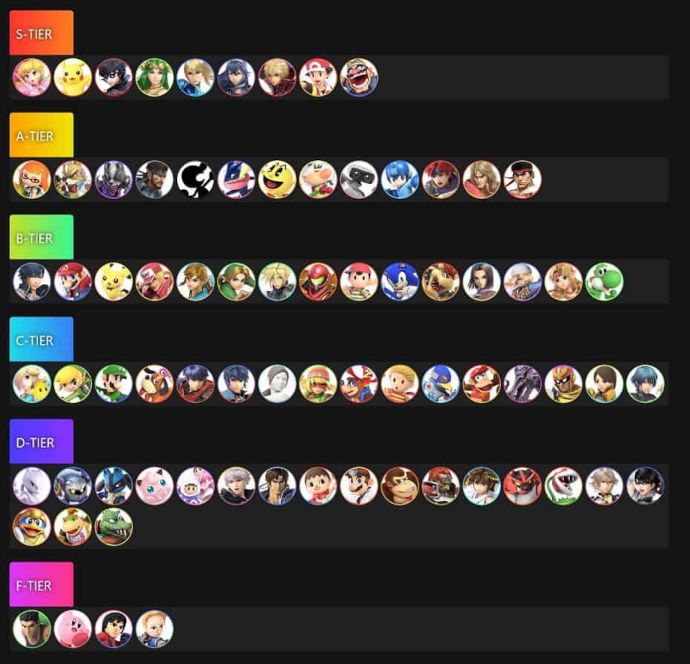

Cam Lynch
in this post:
Hey everyone, this is the inaugural blog post. I am Cam, and I am just starting this journey. This post covers Min-Maxing: Applying Video Game Concepts to Technology and Product. I will examine what min-maxing means, where it originates from, and how I plan to apply it to the technology of mobile apps. I will then cover the outputs, where we see min-maxing in business and product. Finally, I will summarize what I hope readers can take away from these posts — enjoy the read.
TL;DR:
- Create a scalable and applicable method as a thought experiment on solving problems by addressing the limitations or issues and min-maxing off of them.
- Provide professionals and other on-lookers with ideas about minimizing and minimizing parts of their development and company.
- Serve as a source of my documentation of issues and ideas that I come across to achieve optimization on all subjects related to tech, company vision, and business strategy.
- Store my devlogs and research on all subjects related to technology, my passion projects, and what I have learned along the way.
- Hopefully, provide an excellent resource to others, and boost my potential for future opportunities.
History of Min-Maxing
Min maxing is a term taken from roleplaying games initially starting from table-top board games like D&D and migrating to titles such as World of Warcraft and Diablo. It relates to having a set of mechanics that the player character can optimize to achieve the player’s goals most effectively. While maximizing the player’s traits, they minimize all the traits that do not help them effectively accomplish their goals.
Min-maxing
One example in a game is Deus Ex: the player has options navigating every level, and one option is to use a stealth mechanic. Specializing in stealth means that the player does not need to specialize in strength-related traits, so they will not invest in strength skills points. So, using this example, min-maxing is concentrated on the mechanics created by the developers and how they are implemented. A min-maxer is trying to prioritize optimization within the system’s rules based on their desired outcome. You can see below min-maxing in the case of super-smash bros, often really competitive players will only choose characters in the A-tier or S-tier, a great example of competition requiring maximizing based on the system, these characters are considered the best.

min-maxing in Super Smash Bros an office favorite
How Can We Apply This to Technology and Product?
While all of this makes sense when applied to video games, can we also relate this to technology, and product vision, and the mobile app business? I will be arguing throughout an unknown number of blog posts. Yes, we can, At moments in a professional’s career, a project at work, or designing a system, we try to resolve the mechanics or requirements to create a system that solves business needs and addresses use cases. I will argue for min-maxing as a school of development thought by referencing projects that are going on in my current career, everything tech from user profile databases, user mapping across apps due to IDFA deprecation, real-time personalization, and a company’s tech stack at large.
I will also reference agile frameworks in product development and technology such as Scrum, Kanban, waterfall, dynamic systems, feature development, domain-driven design, to name a few. There are also the Agile X DevOps frameworks of Continous Delivery, Continous Integration, etc. the list of frameworks or working principles is so long… To drive my point on min-maxing being fundamental for system development, I will look deeper into how systems are designed by scouring tech giant’s engineering blogs, practical experiences at work, and applying these learnings to my passion projects.
I aim to clarify how we maximize and minimize at a tech and product level. Is the method for tackling optimization to look at the limitations given by the current tech or the structure and people causing restrictions in the effectiveness of the company? While problems can result from both, the goal is to devise a way to solve a business problem or extend that company’s technological frontier. The goal in this hyper-data and model-driven world is to maximize the tech and minimize the people involved. If we can have limited human contact with the end-user beyond making the infrastructure automate communication, it is a positive initiative.
How Does This Apply to the Mobile App Ecosystem?
I touched on how min-maxing applies to tech development and how I aim to prove it to be an excellent concept to build apps. But how does min-maxing apply to the outcome? A business, most notably, a mobile app tech business. In the last two years, we saw drastic changes, be it from the COVID pandemic causing a shift to work and brought a surge to all mobile app engagement metrics.
Also, in terms of strategic moves from mobile app companies, Zynga acquired Chartboost, Voodoo acquired Bidshake. These acquisitions can be seen as strategic maximization knowing the power of mapping VIA IDFV, other internal IDs, and probabilistic matching due to IDFA depreciation. These companies know that they can use this first-party data internally and offer their acquisition services to other app companies while strengthening their ability to maximize AAR (acquisition, activation, and retention) to their app users. Beyond those case studies, 2020-2021 has represented the most active year in history for mobile app and specifically mobile gaming app M&A movements.
 Investgame’s tracker for M&A deals in gaming space
Investgame’s tracker for M&A deals in gaming space
Why does this Min-Maxing Blog Need to Be Written?
Scoping in on a scalable and applicable principle for tech is not straightforward, with min-maxing for business and tech. I aim to automate tasks for a business that can simplify operations and allow the company vision to be achieved. We are also trying to create technical architecture that can scale based on a product’s future potential, such as real-time activation of a user’s data to change their experience in the product and user-generated content hosting and delivery. We can also see min-maxing in a company structure. With the prominence of min-maxing in the digital space, it is not too big of a leap that applying it to analog life might work out.
Keep an eye out for future articles, and I look forward to creating some insightful pieces. Check out this first official post on product development. I am happy to converse with all — reach out on LinkedIn.